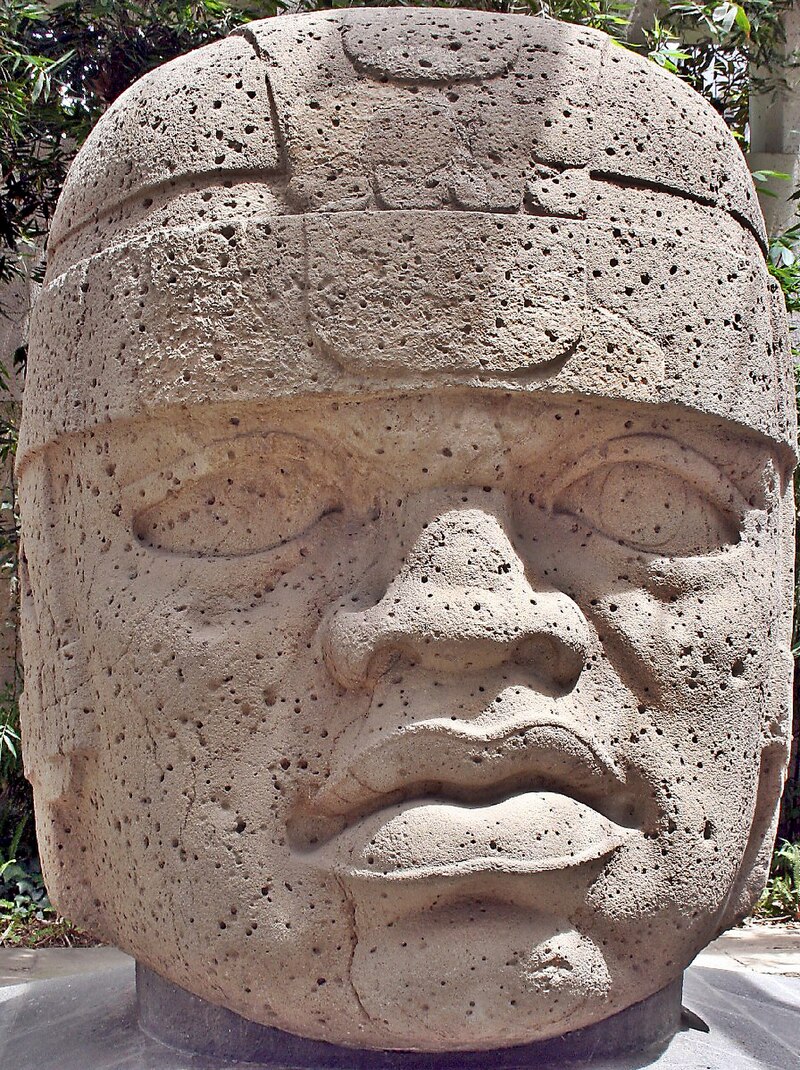
The colossal heads are distinctive features of the Olmec civilization of ancient Mesoamerica. The first archaeological investigations of the Olmec culture were carried out by Matthew Stirling in Tres Zapotes in 1938, stimulated by the discovery of a colossal head in the 19th century. To date, the existence of seventeen stone heads has been confirmed. , all within the Olmec heart on the Gulf Coast of Mexico, in the states of Veracruz and Tabasco. Most of the colossal heads were sculpted in spherical rocks, except for two, found in San Lorenzo-Tenochtitlán, which were carved from thrones of solid stone.An additional monument, in Takalik Abaj, in Guatemala, is a throne that could having been sculpted from a colossal head.3 This is the only exemplar outside the Olmec heart. The dating of the monuments has been difficult due to the changes that many have presented regarding their original context. The majority of the heads date from the beginning of the Preclassic Period (1500-1000 BC) and some from the Middle Preclassic Period (1000-400 BC). The smallest specimens weigh around 6 tons, while the largest is estimated to weigh 40 to 50 tons, although it was left unfinished near the source of its stone. These male heads were made in basalt, measured 2.7 meters high and had an average weight of 25 tons. The colossal Olmec heads were sculpted from large basalt stones extracted from the Sierra de los Tuxtlas of Veracruz. These were transported over long distances, although the method used for transport is unclear. The finished monuments represented realistically the portraits of the different Olmec rulers as for example the first ruler of the culture, each with a distinctive headdress, and the heads were organized in various forms in line or groups in the main Olmec centers. Likewise, all the colossal heads show mature men with fleshy cheeks, flat noses, flat backs and eyes that tend to be slightly squished. The general physical characteristics of the heads are of a race or population that is still common in the states of Tabasco and Veracruz at present. They are also believed to be warriors, and not gods, because of the helmets they wear. The Olmec heads can not be dated in a precise way but the heads of San Lorenzo were buried around 900 BC. C., indicating that its period of use and manufacturing was even earlier. The heads of Tres Zapotes had been moved from their original context before being investigated by archaeologists and the heads of La Venta are partially exposed on the surface of the current ground. Due to these factors, the period of production of the colossal heads is not known, so it can vary from a century to a millennium.5 Estimates of the lapse of time during which the colossal heads were produced vary from 50 to 200 years .6 The heads of San Lorenzo, it is believed, may be the oldest examples of the type and, at the same time, the most skilfully executed.7 Thanks to this, the stone heads have been assigned to the Preclassic period of the chronology Mesoamerican, generally to the Early Preclassic (1500-1000 BC), although those of Tres Zapotes and the head of La Cobata have been attributed to the Middle Preclassic (1000-400 BC).